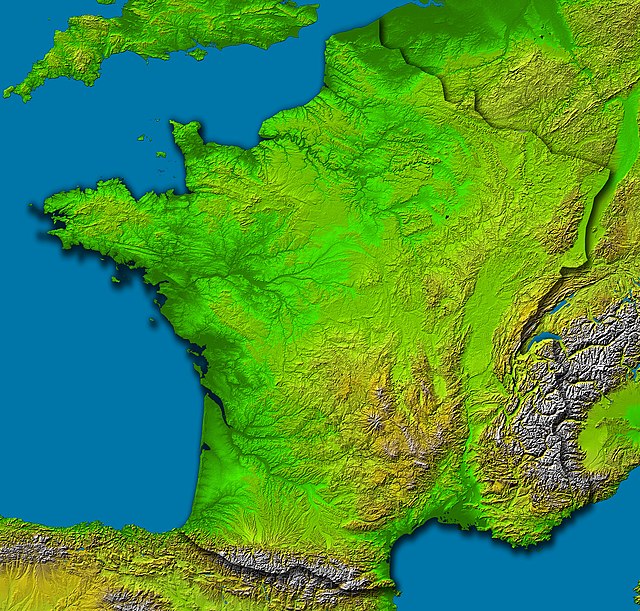Massif Central
elevated region in south-central France From Wikipedia, the free encyclopedia
Remove ads
The Massif Central is a high region in south-central France. It has mountains and plateaux. It covers 15% of the country. The geological history of the massif is complicated. It is very ancient, and many things have happened to it.[1][2]



The Massif Central is an ancient massif. It was formed during the Variscan orogeny, consisting mostly of granitic and metamorphic rocks. It looks younger in the East because the Alps uplifted during the Paleogene period. The crystalline base of the Massif is Proterozoic, and so is older than most types of life.
Many extinct volcanos are there. It has the largest concentration in the world, with 450 volcanos. The Auvergne Volcanoes National Park is in the massif. The Massif is separated from the Alps by the valley of the Rhone.
These departments are usually considered as part of the Massif Central: Allier, Ardèche, Aveyron, Cantal, Corrèze, Creuse, Haute-Loire, Haute-Vienne, Loire, Lot, Lozère, and Puy-de-Dôme.
Remove ads
Mountains
Here are some well-known mountains in the massif central:
- Puy de Dôme (1464 m)
- Puy de Sancy (1886 m)
- Plomb du Cantal (1855 m)
- Mont Lozère (1702 m), the highest non-volcanic summit
- Mont Aigoual (1567 m), near Le Vigan
Geography

The Massif Central is an important mountain range in France. The Alps, the Pyrénées, and Corsica are higher; Jura, Vosges, Morvan and Ardennes are lower.
References
Wikiwand - on
Seamless Wikipedia browsing. On steroids.
Remove ads
